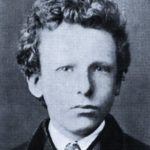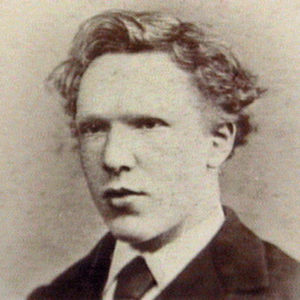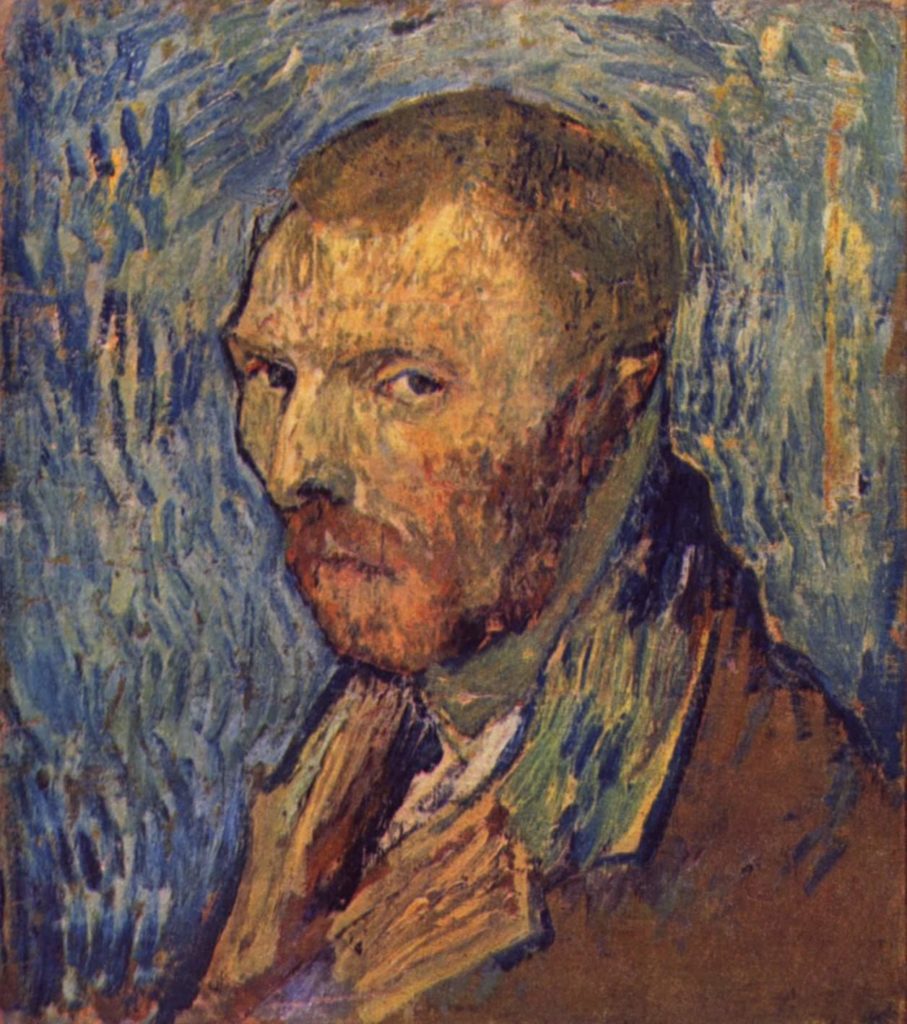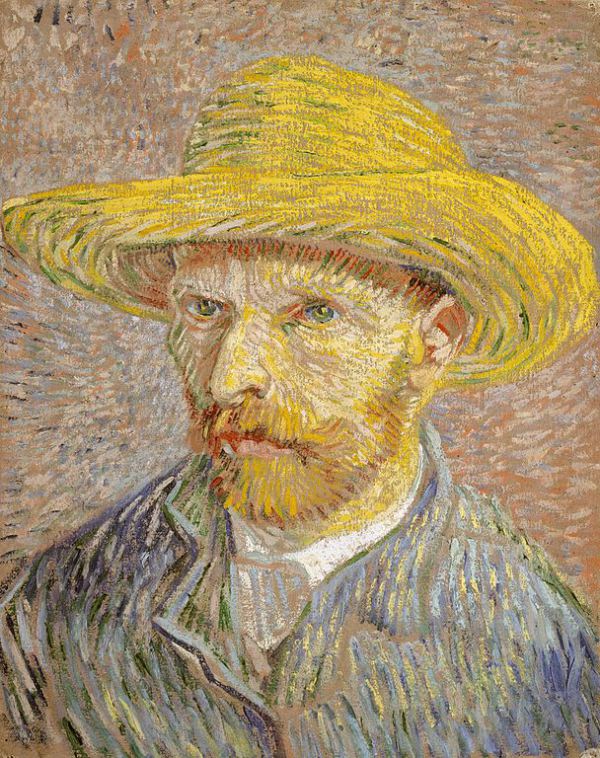Vincent van Gogh (30 Mar 1853 – 29 Jul 1890)
BIOGRAPHIES, 27 Mar 2017
Biography – TRANSCEND Media Service
Vincent van Gogh is considered the greatest Dutch painter after Rembrandt, although he remained poor and virtually unknown throughout his life. After having been physically and psychologically unstable, he cut off his ear and offered it to a prostitute.
“As for me, I am rather often uneasy in my mind, because I think that my life has not been calm enough; all those bitter disappointments, adversities, changes keep me from developing fully and naturally in my artistic career.”
—Vincent van Gogh
Vincent van Gogh was born on March 30, 1853, in Groot-Zundert, Netherlands. Van Gogh was a post-impressionist painter whose work, notable for its beauty, emotion and color, highly influenced 20th century art. He struggled with mental illness, and remained poor and virtually unknown throughout his life. Van Gogh died in France on July 29, 1890, at age 37, from a self-inflicted gunshot wound.
Vincent van Gogh was born Vincent Willem van Gogh on March 30, 1853, in Groot-Zundert, Netherlands. His father, Theodorus van Gogh, was an austere country minister, and his mother, Anna Cornelia Carbentus, was a moody artist whose love of nature, drawing and watercolors was transferred to her son. Van Gogh was born exactly one year after his parents’ first son, also named Vincent, was stillborn. At a young age—his name and birthdate already etched on his dead brother’s headstone—van Gogh was melancholy.
At age 15, van Gogh’s family was struggling financially, and he was forced to leave school and go to work. He got a job at his Uncle Cornelis’ art dealership, Goupil & Cie., a firm of art dealers in The Hague. By this time, van Gogh was fluent in French, German and English, as well as his native Dutch.
In June of 1873, van Gogh was transferred to the Groupil Gallery in London. There, he fell in love with English culture. He visited art galleries in his spare time, and also became a fan of the writings of Charles Dickens and George Eliot. He also fell in love with his landlady’s daughter, Eugenie Loyer. When she rejected his marriage proposal, van Gogh suffered a breakdown. He threw away all his books except for the Bible, and devoted his life to God. He became angry with people at work, telling customers not to buy the “worthless art,” and was eventually fired.
Van Gogh then taught in a Methodist boys’ school, and also preached to the congregation. Although raised in a religious family, it wasn’t until this time that he seriously began to consider devoting his life to the church. Hoping to become a minister, he prepared to take the entrance exam to the School of Theology in Amsterdam. After a year of studying diligently, he refused to take the Latin exams, calling Latin a “dead language” of poor people, and was subsequently denied entrance.
 The same thing happened at the Church of Belgium: In the winter of 1878, van Gogh volunteered to move to an impoverished coal mine in the south of Belgium, a place where preachers were usually sent as punishment. He preached and ministered to the sick, and also drew pictures of the miners and their families, who called him “Christ of the Coal Mines.” The evangelical committees were not as pleased. They disagreed with van Gogh’s lifestyle, which had begun to take on a tone of martyrdom. They refused to renew van Gogh’s contract, and he was forced to find another occupation.
The same thing happened at the Church of Belgium: In the winter of 1878, van Gogh volunteered to move to an impoverished coal mine in the south of Belgium, a place where preachers were usually sent as punishment. He preached and ministered to the sick, and also drew pictures of the miners and their families, who called him “Christ of the Coal Mines.” The evangelical committees were not as pleased. They disagreed with van Gogh’s lifestyle, which had begun to take on a tone of martyrdom. They refused to renew van Gogh’s contract, and he was forced to find another occupation.
In the fall of 1880, van Gogh decided to move to Brussels and become an artist. Though he had no formal art training, his younger brother Theo, who worked as an art dealer, offered to support van Gogh financially. He began taking lessons on his own, studying books like Travaux des champs by Jean-François Millet and Cours de dessin by Charles Bargue.
Van Gogh had a catastrophic love life. He was attracted to women in trouble, thinking he could help them. His cousin, Kate, was recently widowed, and when van Gogh fell in love with her, she was repulsed and fled to her home in Amsterdam. He then moved to The Hague and fell in love with Clasina Maria Hoornik, an alcoholic prostitute. She became his companion, mistress and model.
When Hoornik went back to prostitution, van Gogh became utterly depressed. In 1882, his family threatened to cut off his money unless he left Hoornik and The Hague. Van Gogh left in mid-September of that year to travel to Drenthe, a somewhat desolate district in the Netherlands. For the next six weeks, he lived a nomadic life, moving throughout the region while drawing and painting the landscape and its people.
Artist
Van Gogh’s art helped him stay emotionally balanced. In 1885, he began work on what is considered to be his first masterpiece, “Potato Eaters.” His brother, Theo, by this time living in Paris, believed the painting would not be well-received in the French capital, where impressionism had become the trend. Nevertheless, van Gogh decided to move to Paris, and showed up at Theo’s house uninvited. In March 1886, Theo welcomed his brother into his small apartment.
In Paris, van Gogh first saw impressionist art, and he was inspired by the color and light. He began studying with Henri de Toulouse-Lautrec, Pissarro and others. To save money, he and his friends posed for each other instead of hiring models. Van Gogh was passionate, and he argued with other painters about their works, alienating those who became tired of his bickering.
Van Gogh became influenced by Japanese art and began studying eastern philosophy to enhance his art and life. He dreamed of traveling there, but was told by Toulouse-Lautrec that the light in the village of Arles was just like the light in Japan. In February 1888, van Gogh boarded a train to the south of France. He moved into the “little yellow house” and spent his money on paint rather than food. He lived on coffee, bread and absinthe, and found himself feeling sick and strange. Before long, it became apparent that in addition to suffering from physical illness, his psychological health was declining; around this time, he is known to have sipped on turpentine and eaten paint.
Theo was worried, and offered Paul Gauguin money to go watch over van Gogh in Arles. Within a month, van Gogh and Gauguin were arguing constantly, and one night, Gauguin walked out. Van Gogh followed him, and when Gauguin turned around, he saw van Gogh holding a razor in his hand. Hours later, van Gogh went to the local brothel and paid for a prostitute named Rachel. With blood pouring from his hand, he offered her his ear, asking her to “keep this object carefully.” The police found him in his room the next morning, and admitted him to the Hôtel-Dieu hospital. Theo arrived on Christmas Day to see van Gogh, who was weak from blood loss and having violent seizures.
The doctors assured Theo that his brother would live and would be taken good care of, and on January 7, 1889, van Gogh was released from the hospital. He was alone and depressed. For hope, he turned to painting and nature, but could not find peace and was hospitalized again. He would paint at the yellow house during the day and return to the hospital at night.
After the people of Arles signed a petition saying that van Gogh was dangerous, he decided to move to the Saint-Paul-de-Mausole asylum in Saint-Rémy-de-Provence. On May 8, 1889, he began painting in the hospital gardens. In November 1889, he was invited to exhibit his paintings in Brussels. He sent six paintings, including “Irises” and “Starry Night.”
Death and Legacy
On January 31, 1890, Theo and his wife, Johanna, gave birth to a boy and named him after van Gogh. Around this time, Theo sold van Gogh’s “The Red Vineyards” painting for 400 francs.
Also around this time, Dr. Paul Gachet, who lived in Auvers, about 20 miles north of Paris, agreed to take van Gogh as his patient. Van Gogh moved to Auvers and rented a room. In May 1890, Theo and his family visited van Gogh, and Theo spoke to his brother about needing to be stricter with his finances. Van Gogh became distraught about his future, thinking that Theo meant he was no longer interested in selling his art.
On July 27, 1890, van Gogh went out to paint in the morning as usual, but he carried a loaded pistol. He shot himself in the chest, but the bullet did not kill him. He was found bleeding in his room. Van Gogh was taken to a nearby hospital and his doctors sent for Theo, who arrived to find his brother sitting up in bed and smoking a pipe. They spent the next couple of days talking together, and then van Gogh asked Theo to take him home. On July 29, 1890, Vincent van Gogh died in the arms of his brother. He was 37 years old.
Theo, who was suffering from syphilis and weakened by his brother’s death, died six months later in a Dutch asylum. He was buried in Utrecht, but in 1914 Theo’s wife, Johanna, who was a dedicated supporter of van Gogh’s works, had Theo’s body reburied in the Auvers cemetery next to Vincent.
Johanna then collected as many of van Gogh’s paintings as she could, but discovered that many of them had been destroyed or lost, van Gogh’s own mother having thrown away crates full of his art. On March 17, 1901, 71 of van Gogh’s paintings were displayed at a show in Paris, and his fame subsequently grew enormously. His mother lived long enough to see her son hailed as an artist and a genius.
Today, Vincent van Gogh is considered the greatest Dutch painter after Rembrandt. He completed more than 2,100 works, consisting of 860 oil paintings and more than 1,300 watercolors, drawings and sketches. Several of his paintings rank among the most expensive in the world; “Irises” sold for a record $53.9 million, and his “Portrait of Dr. Gachet” sold for $82.5 million.
After more than 100 years since van Gogh’s death, more of his artwork was released. A painting of a landscape entitled “Sunset at Montmajour” was discovered and unveiled by the Van Gogh Museum in Amsterdam in September 2013. Before coming under the possession of the Van Gogh Museum, a Norwegian industrialist owned the painting and stored it away in his attic, having thought that it wasn’t authentic. The painting is believed to have been created by van Gogh in 1888—around the same time that his artwork “Sunflowers” was made—just two years before his death.
Go to Original – biography.com
DISCLAIMER: The statements, views and opinions expressed in pieces republished here are solely those of the authors and do not necessarily represent those of TMS. In accordance with title 17 U.S.C. section 107, this material is distributed without profit to those who have expressed a prior interest in receiving the included information for research and educational purposes. TMS has no affiliation whatsoever with the originator of this article nor is TMS endorsed or sponsored by the originator. “GO TO ORIGINAL” links are provided as a convenience to our readers and allow for verification of authenticity. However, as originating pages are often updated by their originating host sites, the versions posted may not match the versions our readers view when clicking the “GO TO ORIGINAL” links. This site contains copyrighted material the use of which has not always been specifically authorized by the copyright owner. We are making such material available in our efforts to advance understanding of environmental, political, human rights, economic, democracy, scientific, and social justice issues, etc. We believe this constitutes a ‘fair use’ of any such copyrighted material as provided for in section 107 of the US Copyright Law. In accordance with Title 17 U.S.C. Section 107, the material on this site is distributed without profit to those who have expressed a prior interest in receiving the included information for research and educational purposes. For more information go to: http://www.law.cornell.edu/uscode/17/107.shtml. If you wish to use copyrighted material from this site for purposes of your own that go beyond ‘fair use’, you must obtain permission from the copyright owner.


